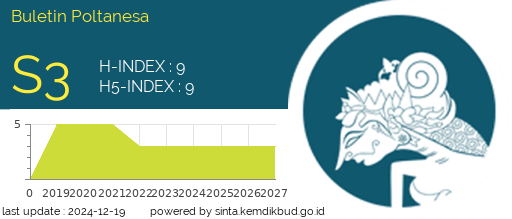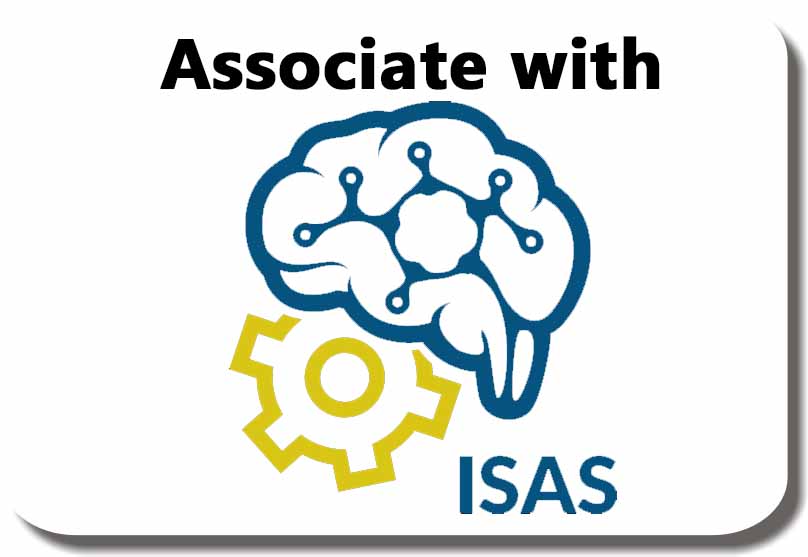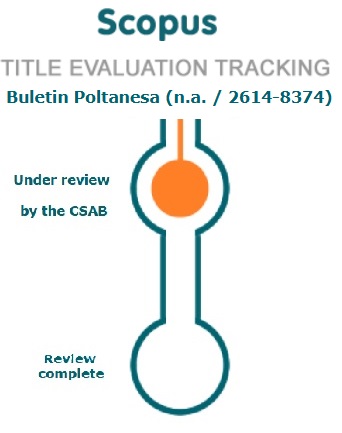Error Analysis of Indonesian Grammatical Interference in Students‘ English Composition
DOI:
https://doi.org/10.51967/tanesa.v22i1.466Keywords:
L1 interference, grammatical interference, morphological errors, syntactical errors, students’ compositionAbstract
The first language (L1) of learners has a significant effect in learning a foreign language. The influence of L1 could become errors, that is called interference. The main purposes of the study are to identify the most dominant type of language interference and the factors contribute to language interference in students’ English composition. The data were collected from 67 Second Grade Students of Plantation Management Study Program in State Polytechnic of Agriculture, Samarinda for the Academic Year 2019/2020, and taken through elicitation technique and documentation, and then analyzed the errors. The result of the study shows that the type of grammatical interference comprise morphological errors and syntactical errors were the most troublesome areas of language that students encountered when conducting composition in English. Since the main focus of the study is L1 interference, only errors related to Indonesian as L1 interference were addressed.
References
Aini, N. (2018). The Grammatical Errors in the Translational Text: Indonesian-English Structure. Tell : Teaching of English Language and Literature Journal, 6(2), 55. https://doi.org/10.30651/tell.v6i2.2109
Ali Ahmed Qasem, F. (2020). Crosslinguistic Influence of the First Language: Interlingual errors in the writing of ESL Saudi learners. Macrolinguistics, 8(13), 105–120. https://doi.org/10.26478/ja2020.8.13.7
Azar, Betty Schrampfer (2000). Understanding and Using English Grammar 3th Edition. New York: Pierson Education.
Azar, Betty Schrampfer & Stacy A. Hagen. (2011). Fundamentals of English Grammar 4th Edition. New York: Pierson Education.
Bhela, B. (1999). Native Language Interference in Learning a Second Language: Exploratory Case of Native Language Interference with Target Language Usage. International Education Journal, 1 (1999), 22-31. http://iej.cjb.net
Budiharto, R. A. (2019). NATIVE LANGUAGE INTERFERENCE ON TARGET LANGUAGE WRITINGS OF INDONESIAN EFL STUDENTS: AN EXPLORATORY CASE STUDY. Indonesian EFL Journal, 5(1), 107. https://doi.org/10.25134/ieflj.v5i1.1630
Charles Owu-Ewie, C. F. L. (2016). L1 (Akan) Interference Errors in L2 (English) Writing : The Case of Three Junior High School Students in Ghana. American Journal of Language, 1, 1–18. http://www.ASRAresearch.org/ajll-vol-1-no-1-2016/
Corder, Stephen Pit. (1981). Error Analysis and Interlanguage. London: Oxford University Press.
De Smet, H. (2010). Grammatical Interference (pp. 75–104). https://doi.org/10.1075/tsl.90.06des
Elkilic, Gencer (2012) Mother tongue traces of Turkish university students on composition papers written in English. Procedia - Social and Behavioral Sciences 47 ( 2012 ) 656 – 664 https://doi.org/10.1016/j.sbspro.2012.06.713
Gaibani, Ahmed (2016) An Investigation into Undergraduates’ Errors in the Use of the Indefinite Article at Omar Al-Mukhtar. British Journal of English Linguistics Vol.4, No.4, pp.24-33, July 2016 https://doi.org/10.7575/aiac.alls.v.6n.6p.195
Hirpa, Tadesse (2019) Analysis of Common Errors Made by Second Year English Language Department Students in Writing Academic Paragraph: The Case of Gilgel Beles CTE. Journal of Education and Practice Vol.10, No.13, 2019 https://doi.org/10.7176/jep/10-13-07
Kazazoǧlu, S. (2020). The impact of L1 interference on foreign language writing: A contrastive error analysis. Journal of Language and Linguistic Studies, 16(3), 1177–1188. https://doi.org/10.17263/jlls.803621
Khumphee, S., & Yodkamlue, B. (2017). Grammatical Errors in English Essays Written by Thai EFL Undergraduate Students. Journal of Education, 11(4), 139–154. https://www.mendeley.com/catalogue/c51261ab-6875-3b49-ac11-60d9865e7837/
Linarsih, A., Irwan, D., & Putra, M. I. R. (2020). The Interferences of Indonesian Grammatical Aspects into English: An Evaluation on Preservice English Teachers’ EFL Learning. IJELTAL (Indonesian Journal of English Language Teaching and Applied Linguistics), 5(1), 69. https://doi.org/10.21093/ijeltal.v5i1.565
Mahmud, M. (2017). Interference: Its Role in the Second or Foreign Language Mastery to Indonesian Learners. Academic Journal Perspective : Education, Language, and Literature, 5(1), 52. https://doi.org/10.33603/perspective.v5i1.553
Mubarok, Y., & Nur’aisyah, A. H. (2020). Native Language Interference in Learning a Second Language. Buletin Al-Turas, 26(1), 173–188. https://doi.org/10.15408/bat.v26i1.13797
Muftah, M., & Rafic-Galea, S. (2013). Error analysis of present simple tense in the interlanguage of adult arab english language learners. English Language Teaching, 6(2), 146–154. https://doi.org/10.5539/elt.v6n2p146
Olana, T., Zeleke, T., & Jiregna, K. (2016). Mother Tongue Interference in English Language Writing at Derge Secondary School: The Case of Grade 9 Students. Science, Technology and Arts Research Journal, 4(4), 208. https://doi.org/10.4314/star.v4i4.29
Pudin, C. S. J., Storey, J. M., Len, L. Y., Swanto, S., & Din, W. A. (2015). Exploring L1 interference in the writings of kadazandusun ESL students. Indonesian Journal of Applied Linguistics, 5(1), 52–60. https://doi.org/10.17509/ijal.v5i1.831
Ratnaningsih, S., & Azizah, A. (2019). Error Analysis in the Descriptive Text Writing of Vocational High School Students. Dinamika Ilmu, 19(1), 175–186. https://doi.org/10.21093/di.v19i1.1364
Salih, N., & Ridha, A. (2012). The Effect of EFL Learners’ Mother Tongue on their Writings in English : An Error Analysis Study. Journal of the College of Arts. University of Basrah No, 60(60), 22–45. https://www.mendeley.com/catalogue/ff04f0fd-761a-3795-a49e-adcb34021f43/
Septiana, A. R. (2020). The Indonesian grammatical interference on EFL students’ writing. Journal of Research on English and Language Learning (J-REaLL), 1(1), 46. https://doi.org/10.33474/j-reall.v1i1.5610
Solano, et, al (2014). Spanish Interference in EFL Writing Skills: A Case of Ecuadorian Senior High Schools. English Language Teaching; Vol. 7, No. 7; 2014 ISSN 1916-4742 E-ISSN 1916-4750 Published by Canadian Center of Science and Education. doi:10.5539/elt.v7n7p40 http://dx.doi.org/10.5539/elt.v7n7p40
Sugiyono. (2017). Metode Penelitian Kuantitatif, Kualitatif, dan R&D. Bandung : Alfabeta, CV.
Sunandar, A., & Susanti, R. (2020). Investigating Error in Written English Sentences: A case study Indonesia EFL Students. Basic and Applied Education Research Journal, 1(1), 8–16. https://doi.org/10.11594/baerj.01.01.02
Syarif, H. (2014). Factors Causing Indonesian Grammatical Interferences on English Use: A Case of Undergraduate Students ’ Expository Writing in Padang , Indonesia. Language Awareness on TEFL for Multigulingual Learners, (1999), 189–195. Retrieved from http://repository.unp.ac.id/436/
Watcharapunyawong, S., & Usaha, S. (2013). Thai EFL students’ writing errors in different text types: The interference of the first language. English Language Teaching, 6(1), 67–78. https://doi.org/10.5539/elt.v6n1p67
Yuniswati, M. (2017). The Study of L1 Interference on English Compositions Made by Eighth Graders. ELLITE: Journal of English Language, Literature, and Teaching, 2(2), 94–100. https://doi.org/10.32528/ellite.v2i2.1508
Vâlcea, C. S. (2020). First language transfer in second language acquisition as a cause for error-making in translations. Diacronia, (11). https://doi.org/10.17684/i11a161en
Downloads
Published
How to Cite
Issue
Section
License
The copyright of this article is transferred to Buletin Poltanesa and Politeknik Pertanian Negeri Samarinda, when the article is accepted for publication. the authors transfer all and all rights into and to paper including but not limited to all copyrights in the Buletin Poltanesa. The author represents and warrants that the original is the original and that he/she is the author of this paper unless the material is clearly identified as the original source, with notification of the permission of the copyright owner if necessary.
A Copyright permission is obtained for material published elsewhere and who require permission for this reproduction. Furthermore, I / We hereby transfer the unlimited publication rights of the above paper to Poltanesa. Copyright transfer includes exclusive rights to reproduce and distribute articles, including reprints, translations, photographic reproductions, microforms, electronic forms (offline, online), or other similar reproductions.
The author's mark is appropriate for and accepts responsibility for releasing this material on behalf of any and all coauthor. This Agreement shall be signed by at least one author who has obtained the consent of the co-author (s) if applicable. After the submission of this agreement is signed by the author concerned, the amendment of the author or in the order of the author listed shall not be accepted.









